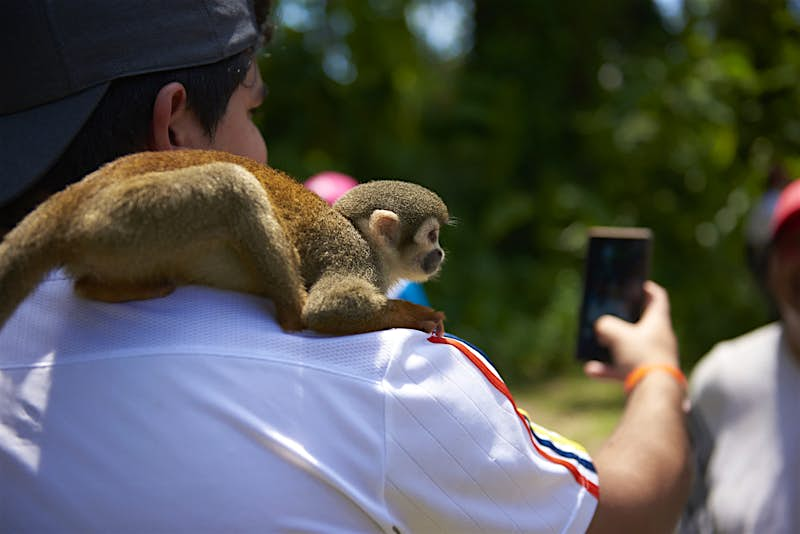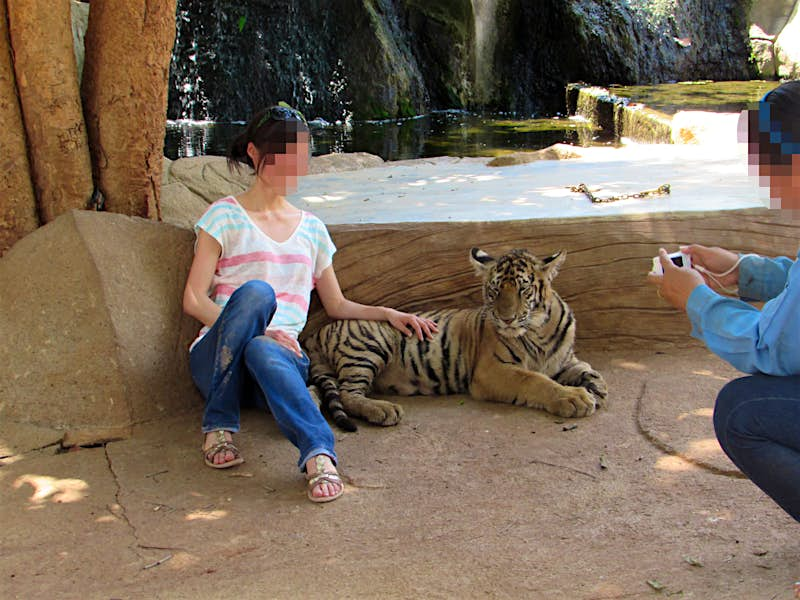While some tourists consider wildlife selfies a cute memento from their trip, experts are warning that they could have devastating consequences for animals, even impacting their birth rates.

Earlier this month, Drayton Manor Zoo, in Staffordshire, came under criticism after offering people the opportunity to take selfies with zoo animals like red pandas and tapirs. The stunt was slated for normalising an Instagram-led trend that sees users pose snap, post and share wildlife selfies. The World Animal Protection (WAP) reports that between 2014 and 2017 there was a 292% increase in the number of wildlife selfies posted to Instagram and at least 40% of those are unethical.
Professor Philip Seddon, the director of New Zealand’s Otago University wildlife management programme, told Lonely Planet that wildlife selfies are often distressing to animals and humans don’t understand the behaviours of animals in the wild. He said the problem is particularly upsetting for penguins and can even be associated with lower birth rates.

“A happy penguin looks just the same as a stressed penguin, but studies have shown that human proximity and handling can cause a huge increase in penguins heart rate and a spike in stress hormones. Chronic stress in penguins, as in people, can cause poor health and poor health means birds can’t breed,” he said. “More directly, a whole lot of photos of people holding penguins are available via social media without context, so viewers can’t tell if a bird is trained for handling or wild, or stressed, means that a general expectation could be formed that having a photo holding a penguin is okay. ”
“If members of the public then try to get such photos from wild penguins they will not only cause stress, but could disrupt breeding activities and expose birds and their eggs and chicks to predation,” he added.

A 2017 study of kangaroos who are exposed to wildlife tours found that both wild and captive kangaroos can be stressed by humans approaching them closely. That’s especially true when they’re approaching them to take photos. The presence of tourists could drive them away from feeding and breeding areas and, as a result, may even affect their birth rates. In New South Wales, officials in Lake Macquarie, which is home to many kangaroos, are trying to now trying to educate travellers about not bothering kangaroos and the main takeaway is: don’t feed them and don’t take selfies.
Julie Cappiello, wildlife campaign manager for WAP told Lonely Planet that the stress animals experience in captivity can cause issues with birth rates and can contribute to stillbirths or babies with low survival rates. “Many animals used as photo props for selfies are kept in small cages which creates a stressful environment and prohibits them from performing natural behaviours,” she added. So even if the animals look like they’re being treated well, using them as props for selfies is cruel.
In 2017, the WAP released a wildlife selfie code that instructed people to only take photos if they’re at a safe distance from an animal, if the animals can move freely and they’re in their natural home. After 250,000 people signed up to the code Instagram launched a new ‘wildlife warning’ page. When Instagram users search for hashtags like #koalaselfie or #elephantride, a message pops up, informing them about the animal suffering behind the photos.
Professor Seddon said, “While photos of wild animals, such as penguins, can be hugely engaging to gain public support for conservation, photos of people handling and holding animals can send the wrong message, i.e. that wild animals are there to be disturbed, held and photographed for our amusement.”
